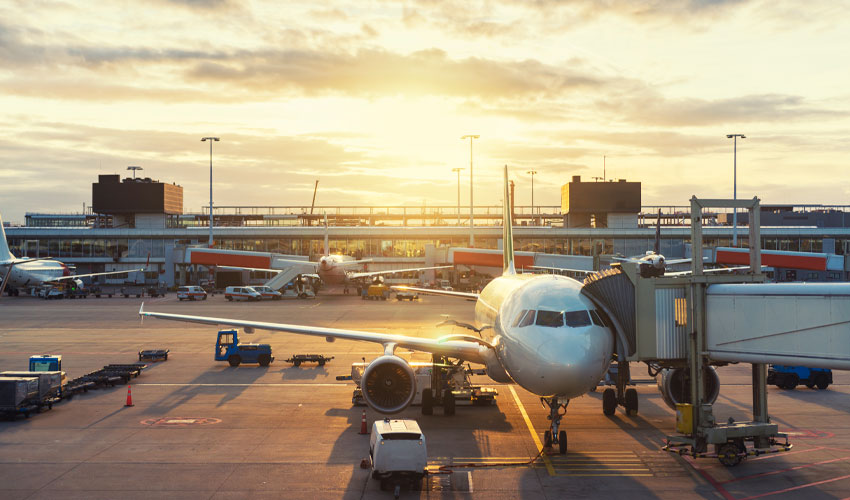Summer is coming, and the aviation industry is already dialing up the intensity. For travelers, that means packed airports and full flights ahead. According to NerdWallet’s annual summer travel survey, more than 2 in 5 Americans plan to travel during the warm season. Similar trends are unfolding globally. The big question now: how will all this demand impact summer schedules?
Last summer, carriers offered around 4.9 million seats from the U.S. to Europe. This year, Cirium estimates that number will rise to 5.1 million—proof that demand is still climbing.
So, busy season prep is well underway. From fresh transatlantic routes to record-setting capacity in Asia-Pacific, airlines are locking in their summer schedules—and they’re not holding back.
But it’s not just about adding flights. This summer is about strategic growth, network optimization, and staying competitive. Airlines around the world are fine-tuning operations to match demand, respond to shifting travel habits, and stay ahead of operational challenges. Behind every full flight is a series of tough decisions made by planners—balancing routes, capacity, and performance.
In this March wrap-up, we explore how major regions are preparing for what could be one of the most dynamic summer seasons in recent years.
1. North America: Growth, Shifts, and a Mexican Power Move
The region is showing cautious but steady growth. For Summer 2025, airlines plan to operate 793 million scheduled seats—a 2% increase over last year. Canada shows a 4% growth, while the U.S. sees a 1.7% bump. Most of this expansion is domestic, reflecting careful capacity management amid ongoing supply chain challenges.
Mexico continues to dominate as the top international destination from North America, with scheduled seats up 8% year-over-year. Low-cost carriers Volaris and VivaAerobus are fueling this surge, adding over a million seats combined. Volaris, now the largest airline in the U.S.–Mexico market, helped push Mexican carriers’ market share to 38%—a big leap from 32% last summer.
Meanwhile, the U.S. legacy carriers are pressing forward. United leads with an 8% boost in domestic capacity, followed by steady gains from American and Delta. But not all airlines are expanding. Spirit and Frontier are pulling back significantly, shedding millions of seats due to restructuring and tough competition. Still, these cutbacks feel more like a strategic reset than a retreat—and overall, momentum behind North America’s flight plans remains strong.
2. Europe’s Summer Schedules Heat Up with Record U.S. Connectivity
With summer schedules now in effect, Europe’s airlines are diving into one of their busiest seasons yet. Over 30 European carriers are set to connect the continent to the U.S., flying up to 342 daily services and accounting for 54% of all Europe–U.S. flights. That’s no small feat—and it signals a peak season shaped by strong demand and bold network plays.
British Airways remains the undisputed leader, serving 25 U.S. airports despite dropping Dallas/Fort Worth for the season. Lufthansa and Air France follow closely, maintaining deep access to key U.S. hubs. Meanwhile, Aer Lingus is flying high, now reaching a record 17 American airports thanks to new routes to Indianapolis and Nashville.
Aer Lingus is also making headlines. Flying to a record 17 U.S. destinations thanks to new routes to Indianapolis and Nashville, the airline is pushing the limits of single-aisle long-haul strategy.
Other players like Icelandair, KLM, and Turkish Airlines are also holding strong, while leisure-focused Condor has trimmed its map, exiting four U.S. cities. All in all, Europe’s airlines are betting big on continued demand—and their summer schedules reflect bold moves and high confidence across the board.

3. Gulf Carriers Compete as New Routes Take Flight
The Middle East aviation market enters the season with a sense of confidence, even as supply chain issues continue to linger. The UAE and Saudi Arabia remain the region’s powerhouses, offering nearly 100 million seats combined. The UAE is pulling ahead with 4.3% capacity growth, while Saudi Arabia sees a more modest 1.5% bump. Qatar holds steady. As airlines return to a more stable market, capacity there is up 44% year-over-year.
Among the big three carriers, Emirates still leads with 22.4 million seats. But Saudia is closing in fast, growing its capacity by nearly 7%. Etihad isn’t staying quiet either—it’s targeting an 18% increase and doubling its flights to Milan.
New routes are taking off across the board. More than 130 new services are launching this summer, including Emirates’ new flights to Edinburgh and Wizz Air’s debut on the Jeddah-to-Gatwick route. Royal Jordanian and Saudia are expanding into Italy, while LOT Polish Airlines is increasing capacity to Tel Aviv and Riyadh. Even with a few declines in markets like Iraq and Syria, the Middle East is heading into its summer schedules with a positive outlook.
4. Asia-Pacific Aviation: Recovered and Ready to Evolve
The Asia-Pacific (APAC) aviation market has bounced back impressively. By the end of 2024, it had surpassed pre-pandemic capacity levels. While global seat capacity rose 2.4% compared to 2019, APAC trailed slightly at 0.5%. Still, it’s a strong signal that recovery is well underway.
Domestic travel is driving that rebound. China leads the way with over 835 million seats, followed by India’s booming low-cost sector. Japan and Indonesia add depth to the region—one a mature market, the other still full of untapped potential. Meanwhile, Indian low-cost carrier IndiGo has quietly risen to become the 10th largest airline globally by seat capacity and the largest in the region.
International travel, however, hasn’t caught up yet. Cross-border seat capacity remains 9.5% below 2019 levels. But key hubs like Singapore and Hong Kong are keeping long-haul links strong. Competition is intense, with legacy and low-cost carriers battling for share. Dual-brand strategies, joint ventures, and regional segmentation are now essential tools in every airline’s playbook.
As APAC carriers fine-tune their summer schedules, they’re walking a tightrope: grow without losing money. Margins remain thin, and IATA says profits per passenger in the region still lag behind global averages. But with a growing middle class, rising digital innovation, and a stronger push toward sustainability, long-term growth is clearly on the radar.
5. Who Was on Time? Global OTP Rankings with Some Surprises
While airlines continued expanding their networks for the peak season, some quietly excelled in one of the most crucial metrics: on-time performance (OTP). According to Cirium’s latest data, a few names stood out—some expected, others surprising:
- Aeromexico led the way with an impressive 92.87% of its 14,701 tracked flights arriving within 15 minutes of schedule, cementing its reputation for reliability.
- Iberia followed at 91.25%, with Qatar Airways close behind at 87.24%.
Two European carriers made headlines last month:
- British Airways returned to the global top 10 with 86.89% OTP across nearly 23,000 flights.
- Lufthansa followed closely at 86.66%, giving Europe strong representation in a category often dominated by Latin American and Asian airlines.
Airports also earned recognition for their punctuality:
- Doha’s Hamad International Airport (DOH) claimed the top spot, with 88.98% of departures on time.
- Benito Juárez International Airport (MEX) landed near the top as well, with an 88.95% OTP.
- Palma de Mallorca Airport (PMI) rounded out the top three at 88.91%, showing that both major hubs and seasonal airports are stepping up their operational game.
Summer Schedules Are Set—Now Let’s See Who Delivers!
The stage is set for one of the busiest and most competitive seasons in years. From North America’s strategic shifts to Europe’s transatlantic push, the Middle East’s expanding route maps, and Asia-Pacific’s fierce market dynamics—every region is making bold moves to capture demand.
In a networked industry where delays ripple fast, on-time performance remains a crucial metric. As summer ramps up, the real test begins. Will capacity match demand? Will punctuality hold?
The next few months will show which airlines were truly ready for takeoff—and which ones fall behind. One thing is clear: Travelers expect more. More options, more reliability, fewer delays.
The pressure is on—not just to fill seats but to run on time, every time.
>> Which region’s approach to summer schedules do you think offers the best strategic balance between capacity growth and operational reliability? Let us know in the comments!





0 comments on “Aviation Wrap-up March 2025: Summer Schedules Are Out”